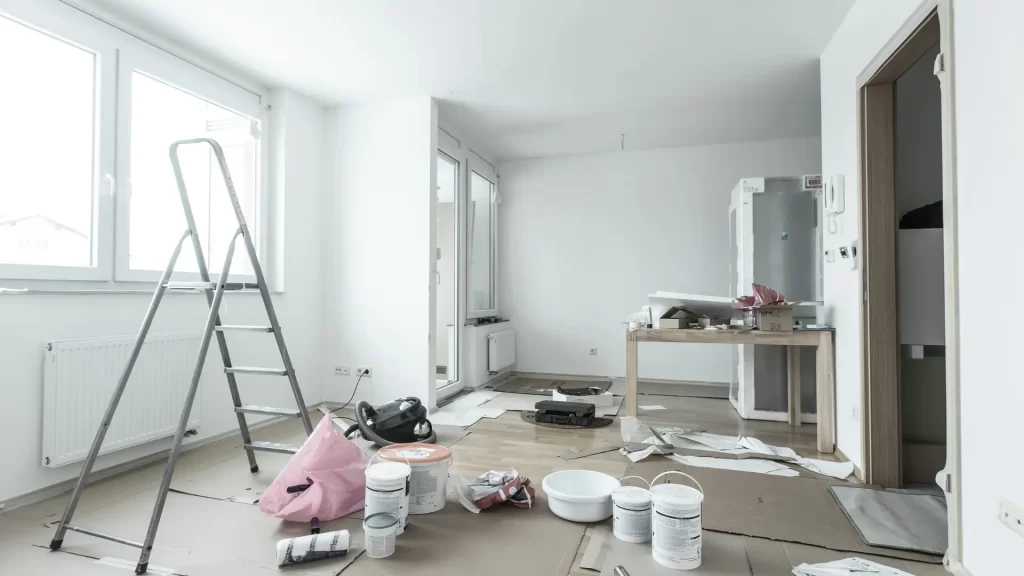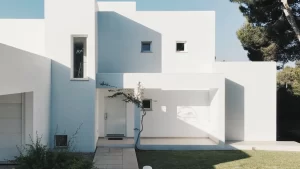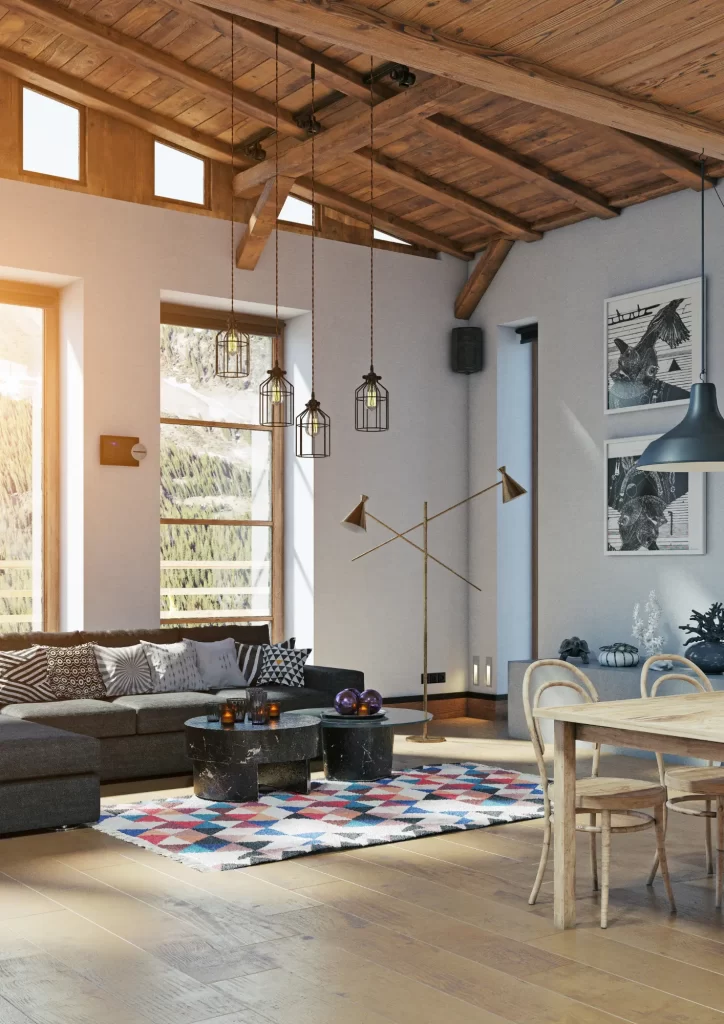Selecting the best ceiling paint for your home is a crucial decision that can greatly impact the overall aesthetics and atmosphere of your living spaces. The right paint can enhance the look of your ceilings, hide imperfections, and add a touch of elegance to any room. In this comprehensive guide, we will explore the key factors to consider when choosing ceiling paint, including types, finishes, colors, and application techniques. Whether you’re embarking on a renovation project or simply refreshing your home’s interior, this guide will help you make an informed decision and achieve stunning results that elevate your living spaces to new heights.
Types of Ceiling Paint
When it comes to choosing the best ceiling paint for your home, you have several options to consider. Each type of paint offers unique characteristics and benefits, catering to different preferences and requirements. Let’s explore some of the most common types of ceiling paint:
- Flat Ceiling Paint: This classic choice is a popular option for many homeowners. Flat paint has a smooth, non-reflective finish that helps to minimize the appearance of imperfections on the ceiling surface. It provides a clean and understated look, ideal for creating a seamless and cohesive aesthetic.
- Satin Ceiling Paint: If you prefer a slightly higher sheen and a subtle reflective quality, satin paint is a great choice. It offers a smooth and soft finish that adds a touch of elegance to your ceilings. Satin paint is also more durable and easier to clean, making it suitable for high-traffic areas or rooms prone to moisture, such as kitchens or bathrooms.
- Eggshell Ceiling Paint: With its velvety texture and low sheen, eggshell paint strikes a balance between flat and satin finishes. It offers a gentle glow that brings warmth to your ceilings while maintaining a level of sophistication. Eggshell paint is often favored for bedrooms, living rooms, and dining areas, where a cozy ambiance is desired.
- High-Gloss Ceiling Paint: For a bold and dramatic statement, high-gloss paint can create a stunning visual impact. This reflective finish adds depth and dimension to your ceilings, making them appear brighter and more spacious. High-gloss paint is commonly used in contemporary or modern settings, where a sleek and polished look is desired.
- Specialty Ceiling Paint: In addition to the standard types mentioned above, there are specialty ceiling paints available in the market. These include stain-blocking paints that help conceal water stains or discoloration, as well as textured paints that add visual interest and hide surface imperfections.
When selecting the type of ceiling paint, consider factors such as the room’s function, desired aesthetic, and personal preference. It’s also important to choose a paint that is specifically formulated for ceilings, as these paints are designed to provide optimal coverage and adhere well to overhead surfaces.

Color Selection
Choosing the right color for your ceiling can significantly impact the overall look and feel of a room. When selecting a color for your ceiling, there are several factors to consider:
- White Ceilings: White is a classic and versatile choice for ceilings. It creates a clean, bright, and timeless look that can visually expand the space and make it feel larger. White ceilings also reflect light, enhancing the overall brightness of the room. This makes them particularly suitable for smaller rooms or spaces with limited natural light.
- Matching the Walls: For a cohesive and seamless appearance, you can paint the ceiling the same color as the walls. This approach creates a continuous flow and can give the illusion of higher ceilings. It works especially well in rooms with low ceilings or in areas where you want to emphasize a particular color scheme or design theme.
- Contrasting Colors: Alternatively, you can choose a contrasting color for your ceiling to add visual interest and create a focal point. This can be achieved by selecting a darker or bolder shade than the walls. A contrasting ceiling color can make a statement, draw the eye upward, and add depth to the room’s overall design.
- Neutral Tones: Neutral colors, such as beige, gray, or taupe, are popular choices for ceilings as they offer a subtle and understated backdrop. These colors can complement a wide range of interior styles and provide a calming and balanced atmosphere.
- Specialty Effects: If you’re looking to add a touch of creativity or uniqueness to your ceiling, you may consider specialty effects, such as faux finishes or decorative painting techniques. These can include textured finishes, metallic accents, or even mural designs. These effects can bring personality and character to your ceiling while complementing the overall aesthetic of the room.
When choosing a color for your ceiling, take into account the room’s purpose, natural lighting, and existing color scheme. It’s also helpful to test paint samples on a small area of the ceiling to see how the color looks under different lighting conditions throughout the day. Ultimately, the goal is to select a color that enhances the room’s ambiance and contributes to the overall desired atmosphere.

Budget Considerations
When selecting the best ceiling paint for your home, it’s important to factor in your budget to ensure a cost-effective choice. Here are some considerations to keep in mind:
- Paint Quality: The quality of the paint plays a significant role in its price. High-quality paints tend to be more expensive but offer better coverage, durability, and color retention. They also require fewer coats, saving you time and effort. While they may have a higher upfront cost, they can provide long-term value by reducing the need for frequent repainting.
- Coverage: The coverage of the paint is an important aspect to consider. Some paints offer better coverage with fewer coats, which can help save on the overall amount of paint needed. This can be especially beneficial if you have a large ceiling area to cover or if you’re on a tight budget.
- Quantity: Calculate the approximate amount of paint required for your ceiling based on its size and the chosen paint’s coverage rate. Purchasing the right quantity of paint can prevent wastage and unnecessary expenses. Many paint manufacturers provide online calculators or guidelines to help estimate the amount of paint needed.
- Value for Money: Consider the overall value you’re getting for the price. Evaluate the paint’s features, such as durability, washability, and ease of application, in relation to its cost. Look for reputable brands that offer a good balance between price and quality.
- Sales and Discounts: Keep an eye out for sales, promotions, or discounts offered by paint retailers. This can be an opportunity to save money without compromising on the quality of the paint. Additionally, consider purchasing paint in larger quantities if available at a discounted price per gallon.
Remember that while budget considerations are important, it’s essential to prioritize quality and durability for a long-lasting and visually appealing ceiling. Balancing cost-efficiency with the desired results will help you make an informed decision that meets both your budget and aesthetic requirements.

Maintenance and Cleaning
Proper maintenance and cleaning of your ceiling paint are essential to preserve its appearance and longevity. Here are some tips to keep in mind:
- Regular Dusting: Dust can accumulate on the ceiling over time, particularly in areas with high ventilation or near cooking areas. Use a soft microfiber duster or a vacuum cleaner with a brush attachment to gently remove dust and cobwebs from the ceiling surface. Avoid applying excessive pressure to prevent damaging the paint.
- Stain Removal: Accidental spills or stains can occur on the ceiling, and it’s important to address them promptly. For water-based stains, such as coffee or food spills, use a mild detergent solution and a soft cloth to gently blot the stain. Avoid scrubbing vigorously, as it may damage the paint. For more stubborn stains, consult the paint manufacturer’s guidelines or seek professional assistance.
- Avoid Harsh Cleaning Agents: Harsh chemicals, abrasive cleaners, or rough scrubbing pads should be avoided when cleaning ceiling paint. These can cause discoloration, fading, or even remove the paint. Opt for mild cleaning solutions, such as a mixture of water and mild dish soap, and use a soft cloth or sponge for gentle cleaning.
- Prevent Moisture Damage: Moisture can cause paint peeling or bubbling on the ceiling. Ensure proper ventilation in areas prone to moisture, such as bathrooms or kitchens, to minimize the risk of damage. Address any water leaks or plumbing issues promptly to prevent water from seeping into the ceiling.
- Touch-Up Paint: Over time, minor scuffs, scratches, or areas of paint wear may appear on the ceiling. Keep a small amount of the original ceiling paint for touch-ups. Before applying touch-up paint, clean the area thoroughly and ensure it is dry. Use a small brush or roller to blend the touch-up paint seamlessly with the existing paint.
By following these maintenance and cleaning practices, you can preserve the appearance of your ceiling paint and extend its lifespan. Regular care and attention will help keep your ceiling looking fresh, vibrant, and well-maintained for years to come.

Selecting the best ceiling paint for your home is a crucial decision that can significantly impact the overall aesthetics and ambiance of your space. By considering factors such as paint type, color selection, finish, budget, and maintenance, you can make an informed choice that aligns with your preferences and requirements.
By considering the types of ceiling paint, color selection, finish, budget, and maintenance, you can confidently choose the best ceiling paint for your home. A well-painted and well-maintained ceiling adds a finishing touch to your space, enhancing its beauty and creating a harmonious environment for you and your family to enjoy.

Looking to upgrade your porch rail? Explore stylish and functional ideas to enhance your home’s curb appeal. Read our blog “10 Stylish and Functional Porch Rail Ideas for Your Home“.




